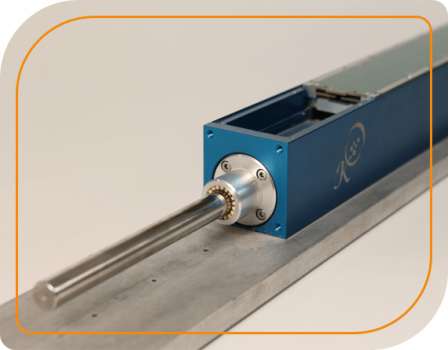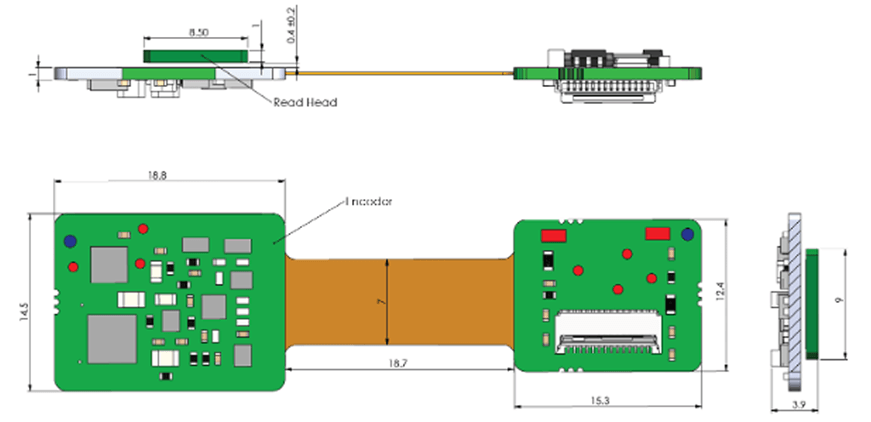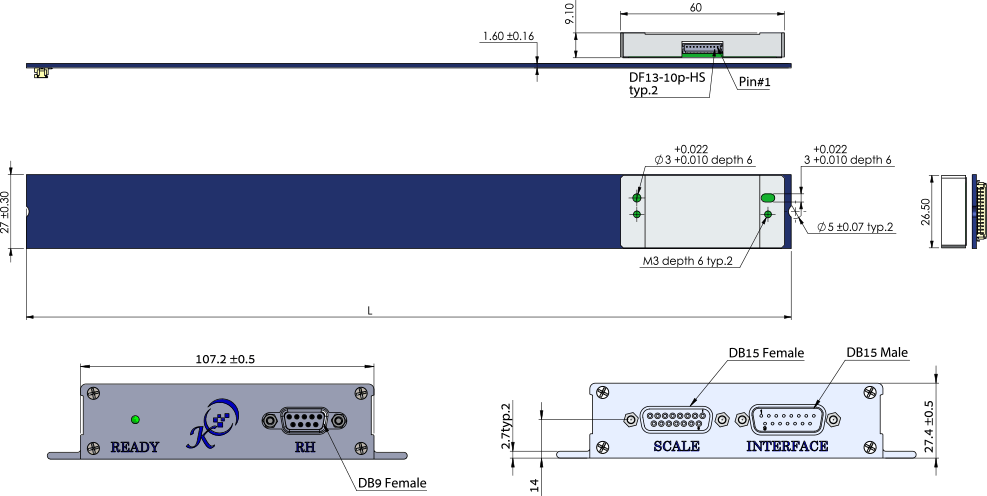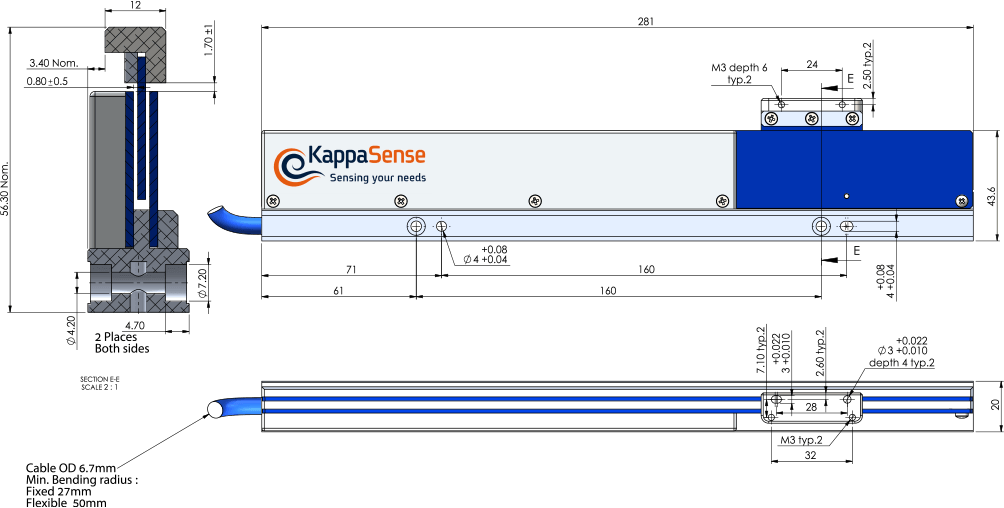Home > Applications > Capacitive Linear Encoders for Linear Actuators
Applications

Linear actuators are electric, pneumatic, or hydraulic components that are used to automate machine functions along straight axes. In most electric linear actuators, the power of a rotary electric motor is turned into linear motion by one of the following methods:
A linear motor is of course also a linear actuator, and here the linear motion is created directly from the motor. This is often referred to as “direct drive linear motion” since the load is connected directly to the motor (or more precisely, to the moving forcer).
Custom linear encoders and specifically actuators are designed to fit a specific application, with considerations including stroke length, precision, stability, load bearing capability, and maintainability.
Although linear motors are generally the most expensive solution for linear motion, they do facilitate the most precise measurement of the load that is being driven since the motor forcer is connected directly to the encoder readhead. Capacitive linear industrial encoders from KappaSense are ideal for such configurations due to the wide installation tolerances of these encoders, their accuracy, and since the encoders are easily customizable to the needs, and primarily the stroke length, of the application. However, linear motors are expensive, as already noted, and their expense is the main obstacle to wider spread adoption of this technology.
On the other hand, linear actuation that is driven from rotary motors is relatively inexpensive, the technologies are well known and well proven, and solutions are available from a multitude of vendors. The challenge is that there are inherent inaccuracies between the angular position of the shaft of the rotary motor and the linear position of the load that is being driven. Inaccuracies arise especially, but not only, from flexibility in belts and from the inevitable wear out of such belts. Stability of positioning is also a challenge given this flexibility, but it is also affected by factors such as gear backlash and the resolution of the encoder on the rotary motor. Inaccuracies are compounded as legitimate concerns for cost drive down the cost of the components of which the linear actuator is composed. Of course, these inaccuracies are not always an issue. It depends on the application.
Capacitive linear high resolution encoders can bridge the world of linear motors with the world of rotary motor-based linear actuators when they are used as the sensing element of the system load. By measuring the actual position of the load, inaccuracies in the rotary-to-linear conversion can be compensated for, with the position control loop in the servo system being closed using the load position instead of the rotary motor position.
By adding a capacitive linear precision encoder on the linear stroke, the position of the load can be accurately determined, and system inaccuracies can be compensated for.
Benefits of capacitive encoders from KappaSense in custom linear actuators include:


